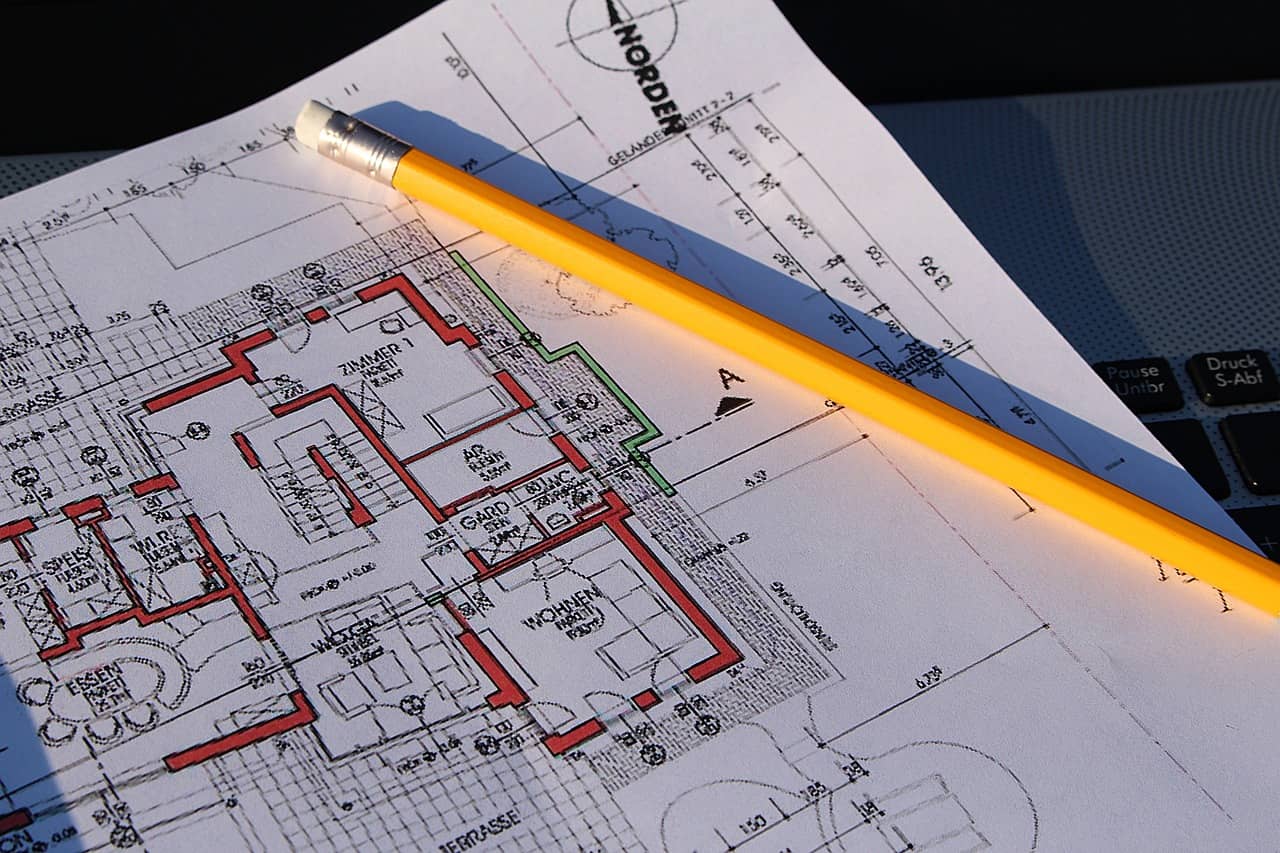Temporary buildings have become quite popular over the past few years. These structures offer many benefits over conventional brick-and-mortar buildings. They are also versatile, which makes them popular in various industries and applications.
Planning regulations are a legal requirement for most construction projects. Whether you are building a temporary warehouse or a family home, it’s crucial to understand and comply with planning regulations.
Herein, we explore the planning process for temporary buildings and the steps involved when applying for planning permissions.
What Are Temporary Structures?
Temporary structures are buildings made using prefabricated materials. These structures are often erected for a limited duration. After their intended use is over, the buildings are pulled down or relocated to a different area. Some people refer to temporary buildings as semi-permanent buildings.
Some of the most common types of temporary structures include industrial tents and interim steel buildings. The buildings can be customized to meet the user’s needs and preferences. They offer plenty of benefits over conventional brick houses.
Planning For Temporary Buildings
As mentioned, planning permits and building regulations are legal requirements. However, the requirements may vary depending on the type and size of your project. For example, some extension and conversion projects are covered under the permitted development clause.
However, there is a catch. All extension projects must be shorter than the building. The extension must also be less than 25% of the size of the original structure.
There are situations where a planning permit is not required for temporary buildings. You don’t need to get a planning permit if the structure has a floor space of under 100 square meters, and if it will be used for less than four weeks.
Also Read: 11 Steps in Construction of Multi Storey Buildings
Applying For a Planning Permission
The process of applying for a planning permit can be challenging depending on the size of your project. As per experts from Smart-Space, reviewing and approval can take 8-12 weeks, which is why you should apply in advance.
Temporary structures are allowed for a limited time. Durations can range from a few days to several months depending on the regulations. It’s crucial to know the maximum allowable duration for your intended use and plan.
Experts recommend applying for a permit before purchasing the structure. For emergencies, you can acquire a retrospective planning permission. However, you must prove that the structure was/is needed for an urgent situation.
Hire a construction consultant to guide you through the application process. The process starts with a site visit from an inspector from the relevant local authority. You have to submit structural and architectural drawings and all supporting documents.
Not applying for a planning permit can get you into trouble with the law. You may be asked to stop construction until you get an approval. In dire situations, you must pull the structure down and pay a fine.
FAQs
What distinguishes temporary structures from permanent ones?
Temporary structures are built using prefabricated materials for a limited duration, whereas permanent structures are designed to stand indefinitely.
Are there any benefits to using temporary buildings in construction?
Yes, temporary structures offer flexibility, cost-effectiveness, and the ability to meet specific project needs without long-term commitment.
Can I use a temporary structure for residential purposes?
In some cases, temporary structures can be used for residential purposes, but it depends on local regulations and the intended duration of use.
Is it possible to move a temporary structure once it’s been erected?
Yes, one of the advantages of temporary structures is their mobility. They can be dismantled and relocated to a different area if needed.
What should I do if I realize I need a planning permit after construction has started?
In cases of urgency, you can apply for a retrospective planning permission, but you must demonstrate that the structure was necessary for an urgent situation. It’s advisable to consult with a construction consultant for guidance in such situations.
Wrapping Up
Temporary buildings are a game-changer in the production and manufacturing industry. However, ensure that you comply with the planning regulations to verify that these structures comply with local laws.
Consult an expert from your local planning authority, understand the specific regulations applicable to your project, and plan well.
Also Read: Classification of buildings based on occupancy




Planning regulations for temporary buildings ensure safety, compliance, and environmental responsibility. These rules govern aspects like structure size, duration, purpose, and location approval. Before installation, permits from local authorities are often required to confirm the building meets zoning and safety standards. Adhering to these regulations prevents legal issues, ensures public safety, and maintains urban order making it essential for businesses, event organizers, and contractors using temporary structures.
Planning regulations for temporary buildings typically include restrictions on location, duration and purpose. Permits may be required specifying maximum size, materials and safety standards. Temporary structures often must comply with zoning regulations and environmental assessments and may be subject to signage and utility restrictions. Compliance ensures safety and minimizes environmental impact.
Planning regulations for temporary buildings typically require approval based on their duration and purpose. It’s important to check local zoning laws to ensure compliance with safety, usage, and environmental standards.
Planning regulations for temporary buildings often depend on their size, purpose, and duration of use. Always consult local authority guidelines to ensure compliance with zoning, safety, and environmental standards.
Planning regulations for temporary buildings ensure they meet safety, health, and environmental standards while being used for a limited time. It’s essential to check local zoning laws and obtain necessary permits before construction to avoid penalties.
Planning regulations for temporary buildings ensure that structures meet safety, environmental, and community standards even for short-term use. These regulations cover aspects like building placement, duration, and intended purpose to maintain compliance and minimize disruptions.
Temporary buildings often require planning permission based on local regulations, size, and duration of use. It’s crucial to consult local authorities to ensure compliance with safety and zoning laws.
Planning regulations for temporary buildings vary by location, often requiring permits for structures in place for more than 28 days. Ensure compliance by consulting local authorities on zoning laws, safety, and environmental guidelines.
Ensure compliance with planning regulations before setting up temporary buildings to avoid legal hurdles. Stay informed on zoning laws and permits for a smooth project execution.
Thank you for this detailed guide on planning regulations for temporary buildings! It’s great to have a clear understanding of the legal requirements and best practices for such structures. This information is incredibly useful for ensuring compliance while planning efficient temporary solutions.
Planning regulations for temporary buildings ensure they meet safety and aesthetic standards while serving their intended purpose. These guidelines help streamline approvals and maintain compliance with local zoning laws and building codes.
Planning regulations for temporary buildings ensure safety, compliance, and minimal impact on the environment. They cover aspects like duration of use, structural integrity, and site placement. Adhering to these guidelines helps maintain orderly development and ensures that temporary structures meet essential standards without disrupting the community.
Temporary buildings often require specific planning permissions depending on their use, location, and duration. Understanding local regulations is key to ensuring compliance and avoiding potential legal issues.
Planning regulations for temporary buildings typically require compliance with local zoning laws, safety standards, and permits. These rules ensure temporary structures meet specific criteria for duration, aesthetics, and impact on the environment. Regulations aim to balance practicality with maintaining community standards and safety.
Planning regulations for temporary buildings are crucial for ensuring compliance and safety. They define how these structures must be designed, installed, and maintained to meet local standards. Adhering to these regulations helps avoid legal issues and ensures that the temporary buildings serve their intended purpose effectively. From permits to safety checks, understanding these regulations is key to successful and trouble-free temporary building projects. Stay informed and plan ahead to ensure your temporary structures are both functional and compliant.
This article offers crucial insights into planning regulations for temporary buildings, covering building codes, zoning requirements, and environmental considerations. It provides a clear roadmap for navigating the complexities of temporary constructions, ensuring legal compliance and sustainability. As someone in the construction industry, I value the practical guidance offered here. ExpertCivil’s informative content is a valuable resource for professionals and newcomers alike. I eagerly anticipate exploring more from ExpertCivil to enhance my knowledge further. Great job!
The craftsmanship of the bespoke hotel bedroom furniture in Manchester is absolutely stunning! It exudes elegance and sophistication, creating a luxurious ambiance for guests. Each piece seems meticulously designed, showcasing an impressive attention to detail. I am truly impressed by this furniture collection.